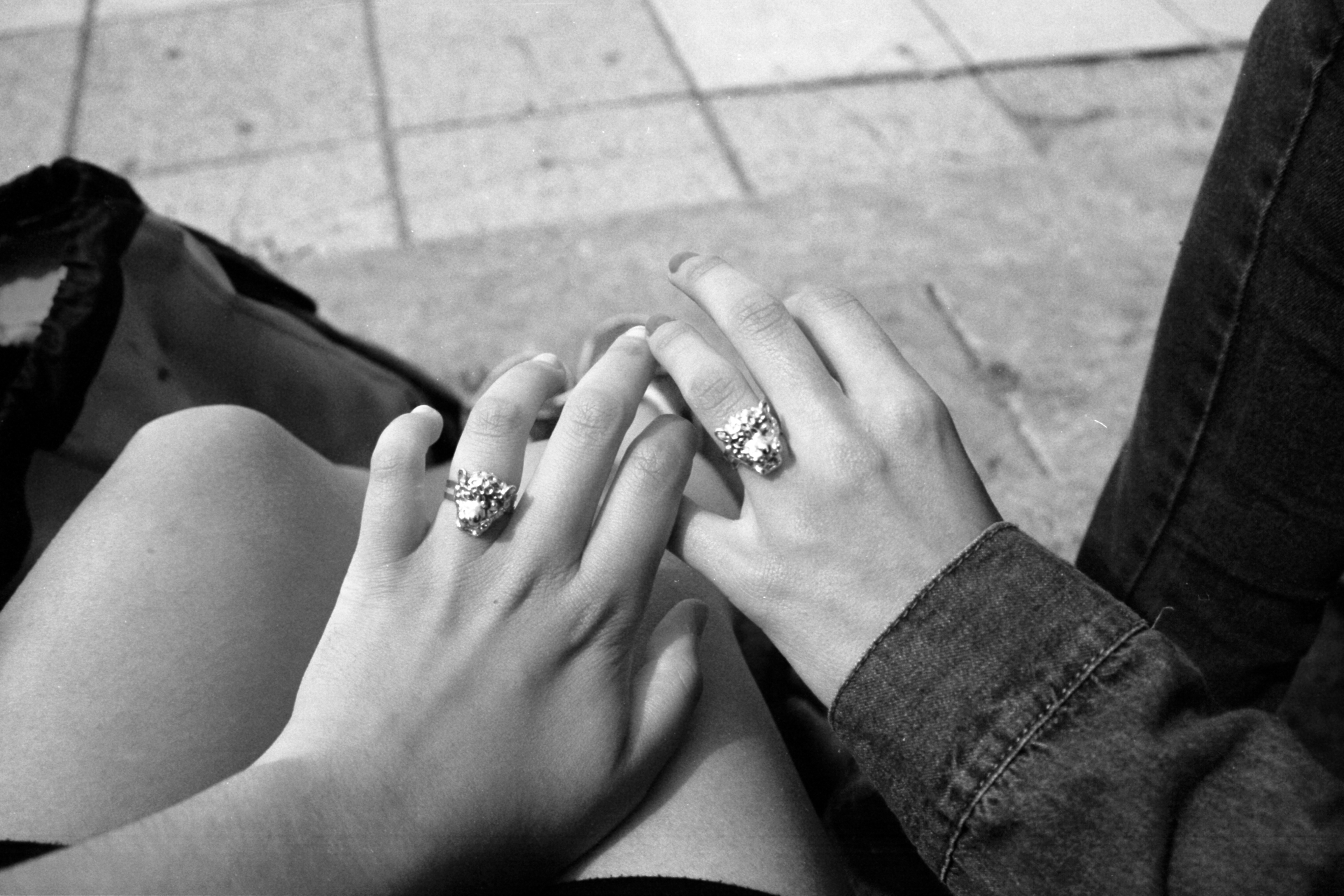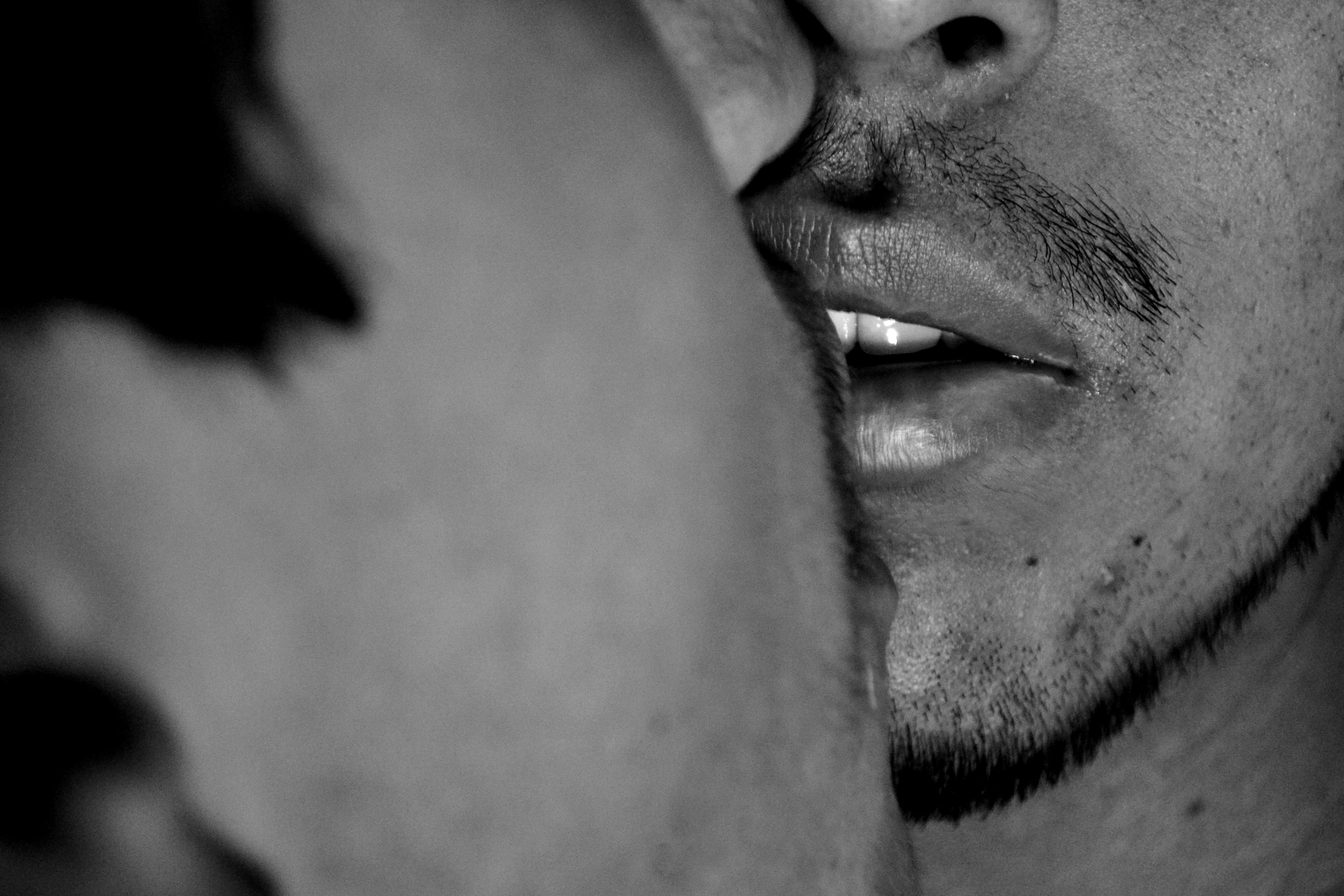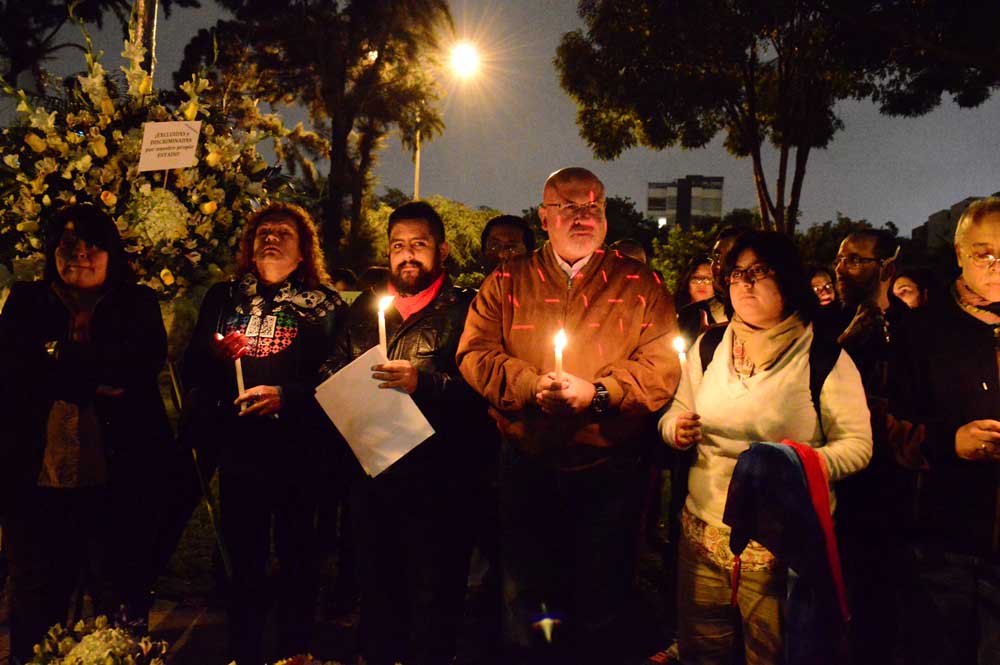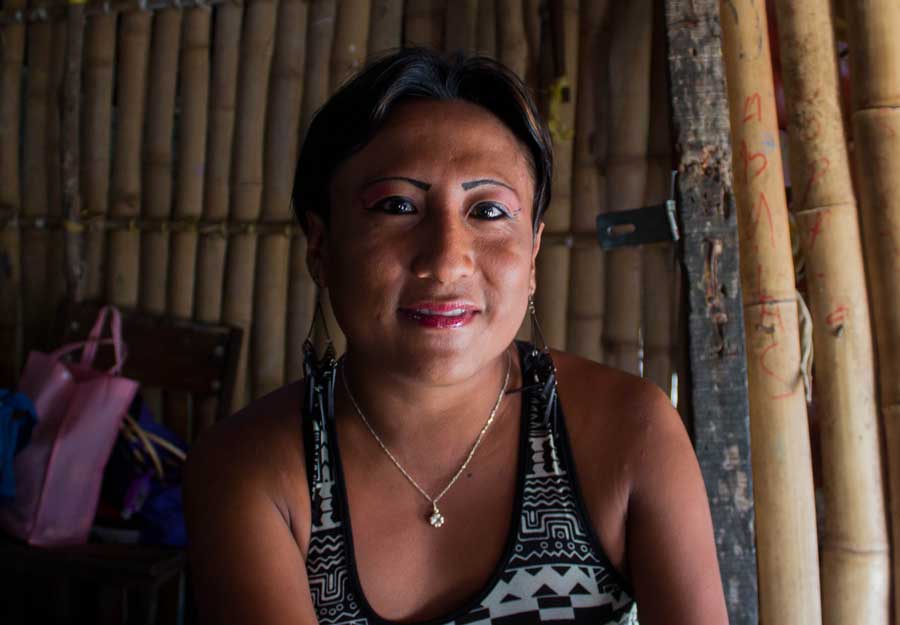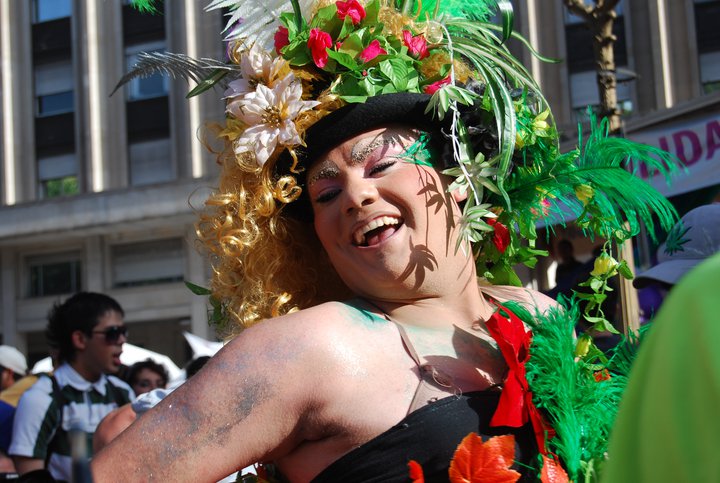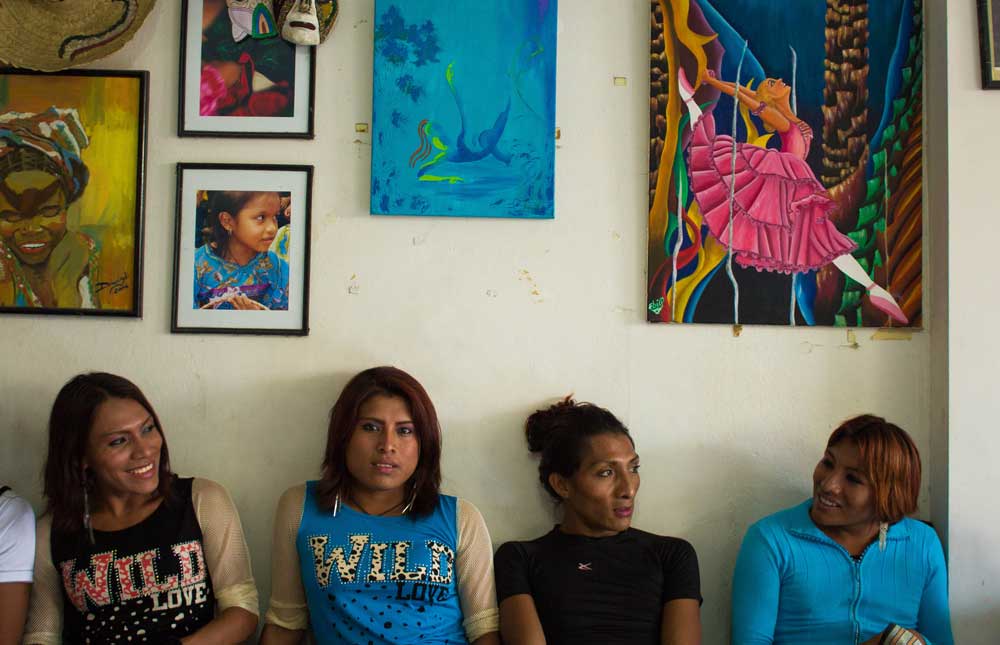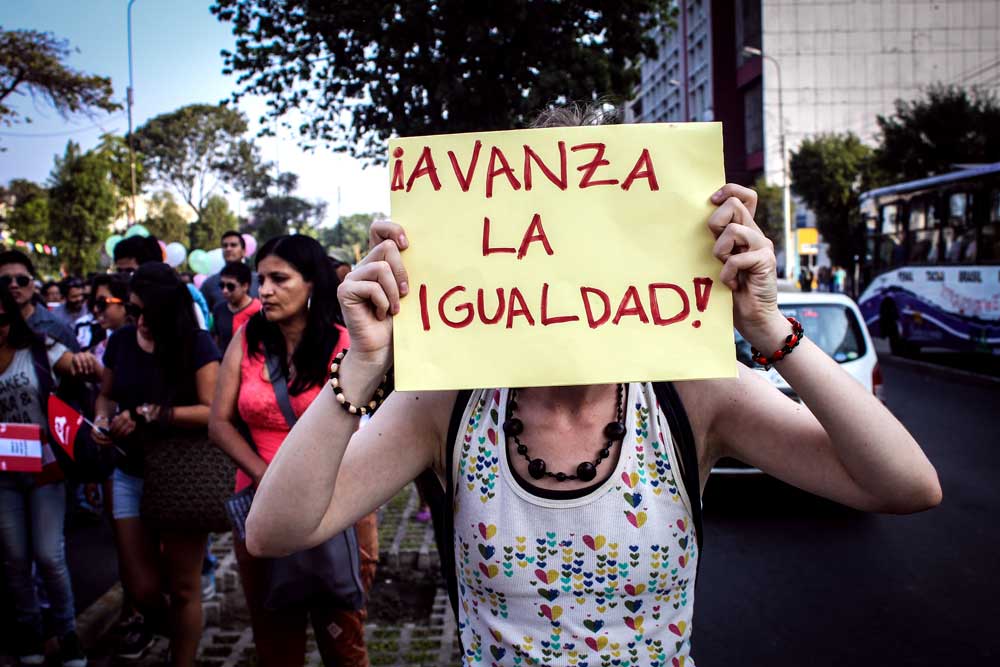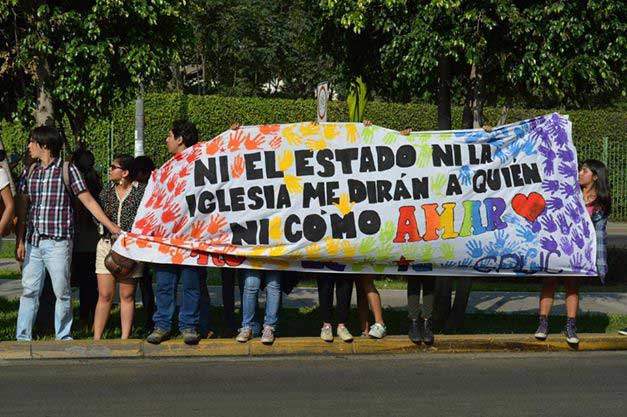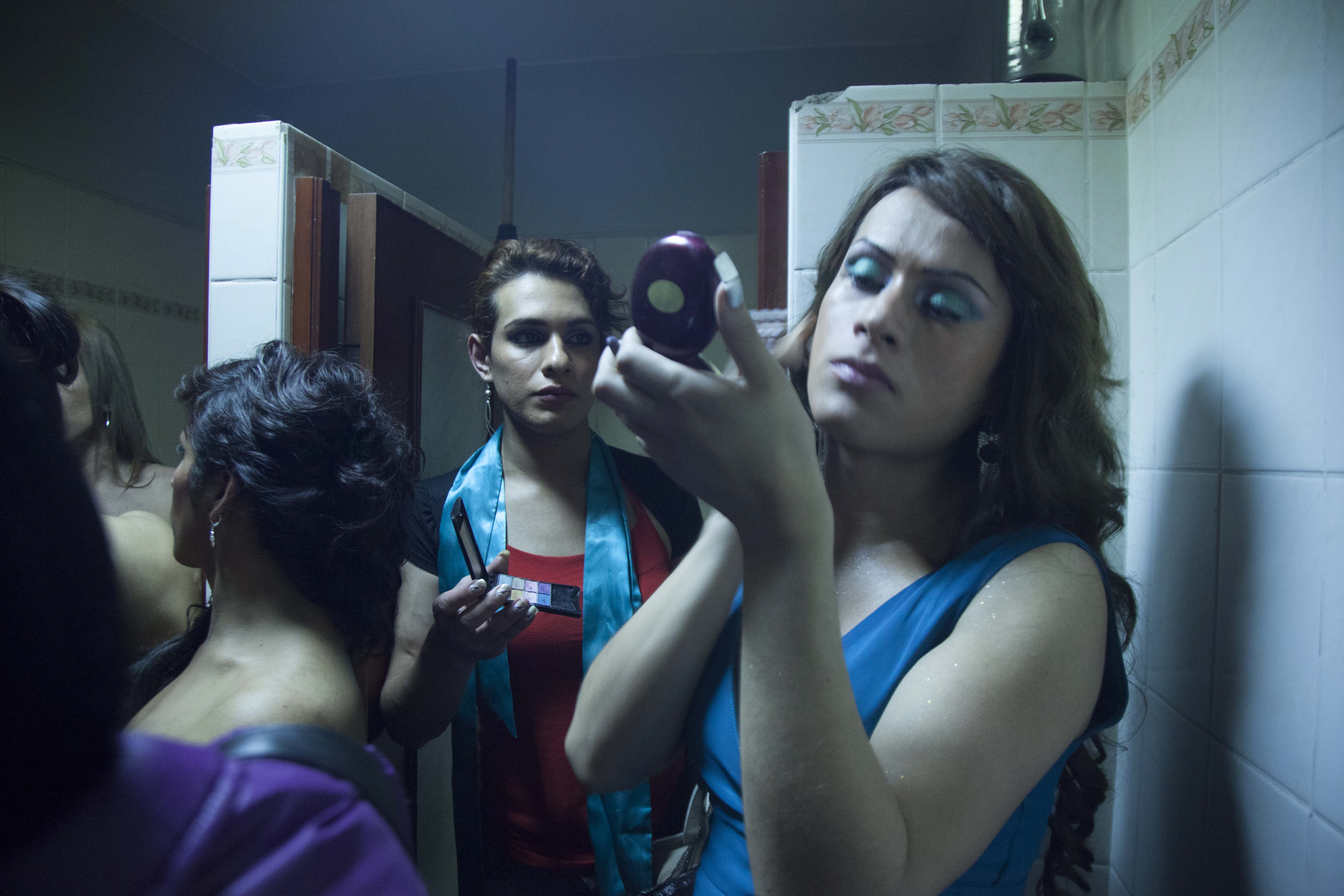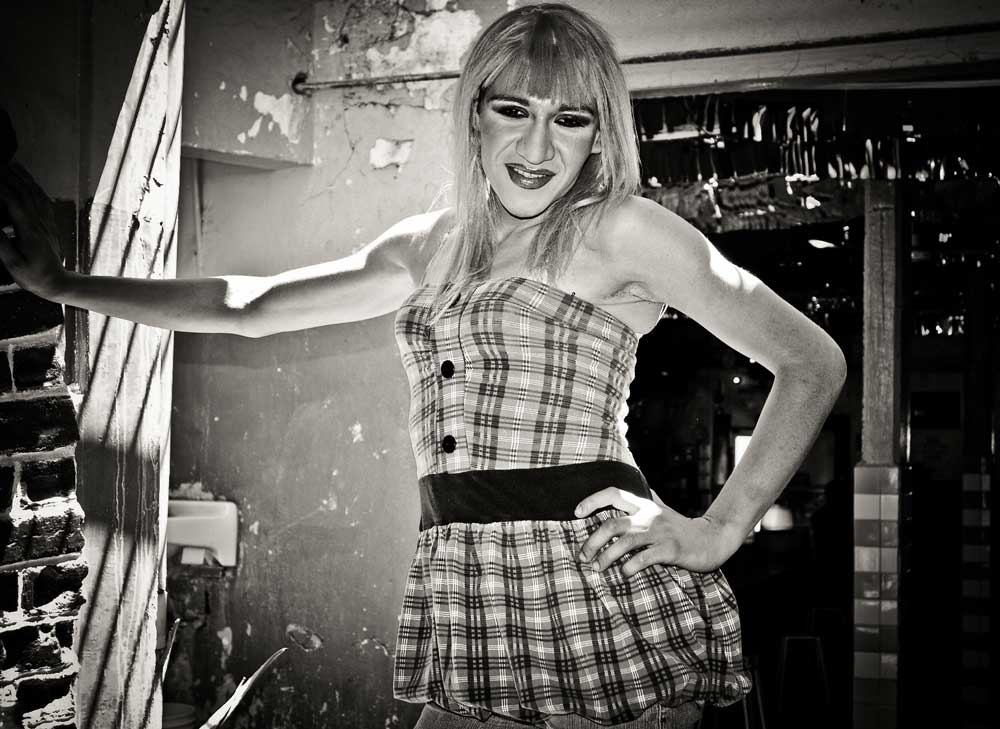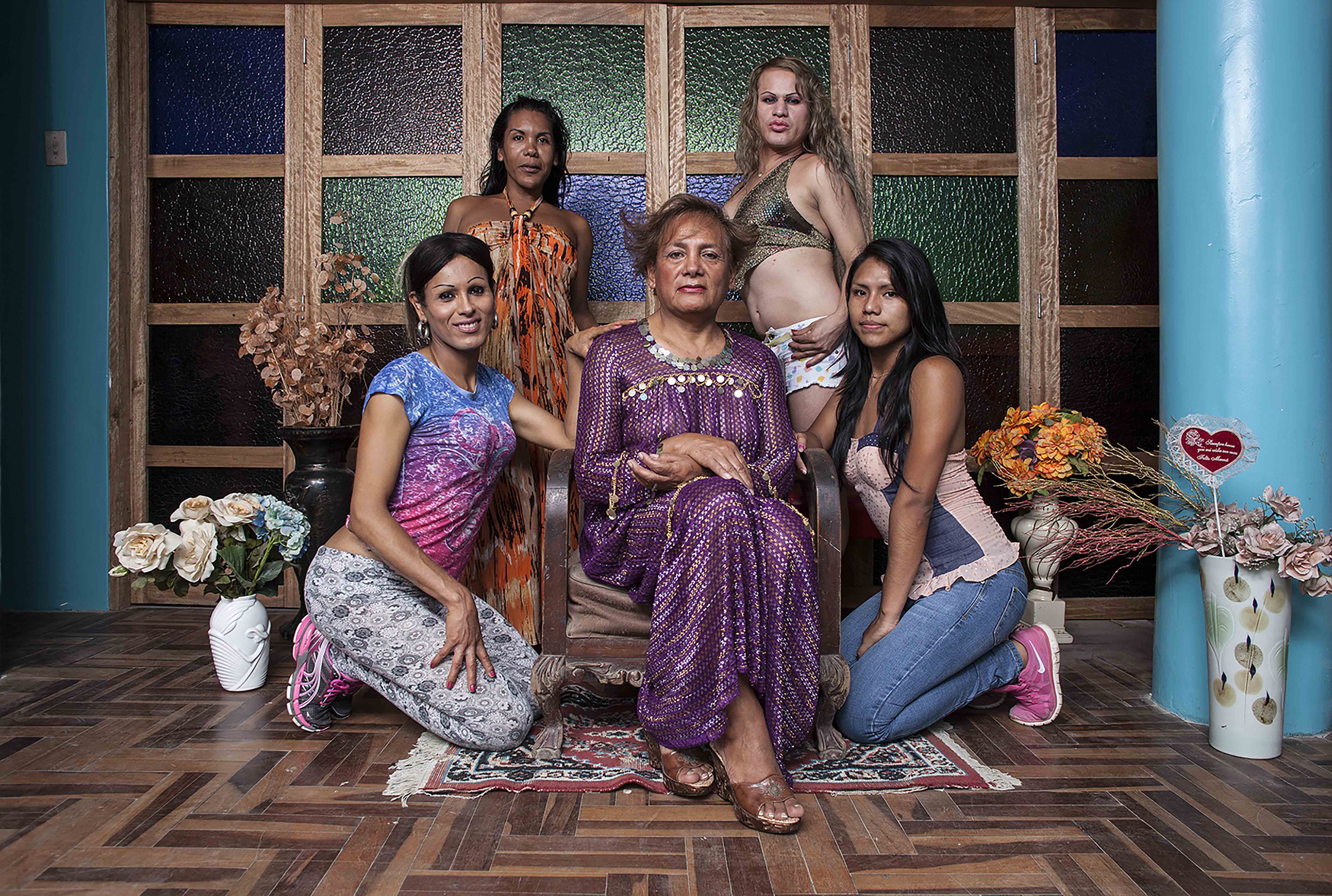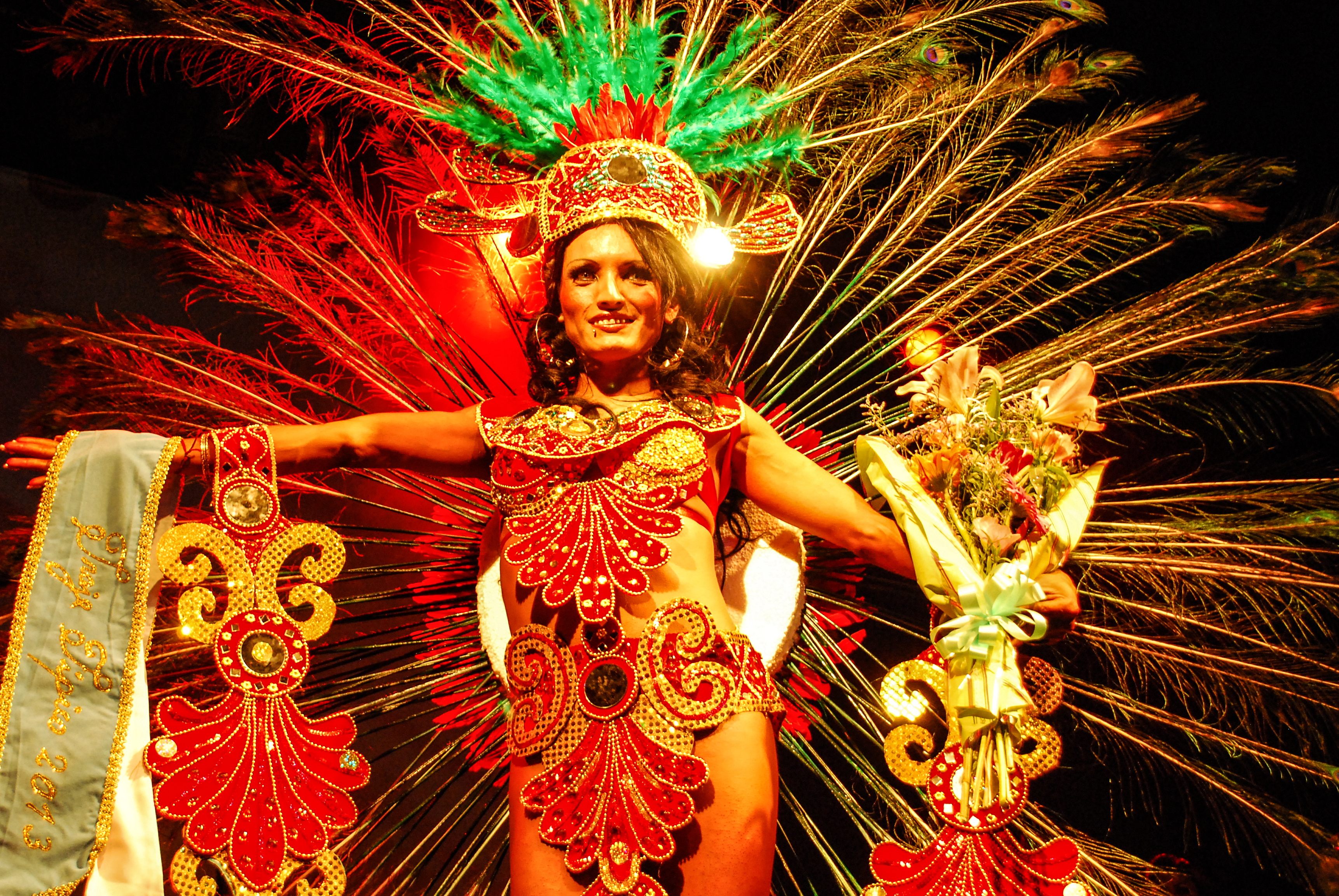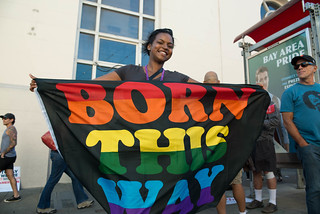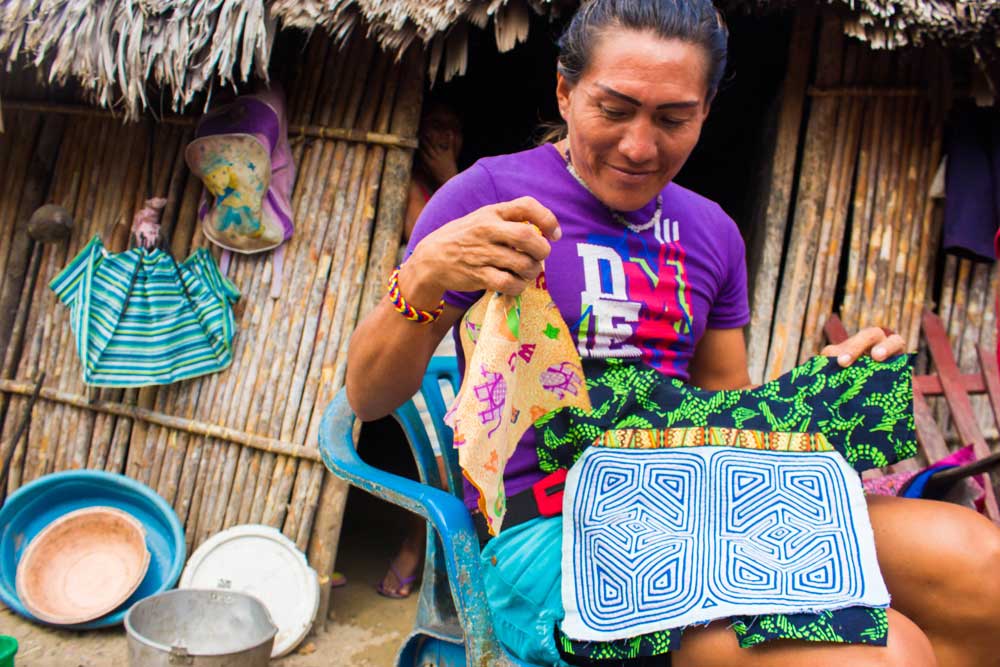Forms and Contexts of Violence
Against Lesbian, Bisexual,
Trans and Intersex Persons
This report focuses on the most serious manifestations of violence against LGBTI persons, namely killings and serious non-lethal attacks such as rape and mob attacks
This report does not address other forms of violence experienced by LGBTI persons, for example verbal violence or psychological abuse.
The main areas examined in this section are:
General Trends in the Findings ExamplesRight to Life Extrajudicial Executions Examples Killings Examples
Right to Personal Integrity Law Enforcement Examples Persons Deprived of Liberty Examples Rape and Sexual Violence Examples Mob Attacks Examples
Medical Violence against Intersex Persons Specific Violations Examples
Provision of Health Services Examples
Attempts to "Change" Examples
Hate Speech and Incitement to Violence
Intersectionality Indigenous Peoples Women Examples Human Mobility Examples Children and Youth Examples Human Rights Defenders Examples Afro-descendants Examples Poverty
Photo credit: torbakhopper - sister may joy b with you.
General trends in the findings of the IACHR
1. Underreporting and lack of official data
The IACHR notes that the available data do not reflect the full dimension of the violence suffered by LGBTI persons in any given State.
2. Pervasiveness of Violence
The IACHR is of the view that violence against LGBTI persons is prevalent in all countries in the Americas. The IACHR found that there were at least 770 acts of violence committed against LGBT persons in a fifteen month period, between January 2013 and March 2014, across 25 OAS Member States.
3. Invisibility of everyday violence
The IACHR notes that underreporting also renders everyday violence against LGBT persons invisible, particularly as it relates to non-lethal attacks.
Non-lethal attacks are the most common type of violence suffered by LGBTI persons in all OAS Member States.
“Killings are most prone to be reported by the media, leaving out ordinary and persistent forms of everyday violence, which have to be, nonetheless, fully exposed, identified and addressed by States.” IACHR, Una mirada a la violencia contra personas LGBTI en América: un registro que documenta actos de violencia entre el 1 de enero de 2013 y el 31 de marzo de 2014, Anexo al Comunicado de Prensa No. 153. 17 de diciembre de 2014.
4. Invisibility of the violence against certain groups:
Trans men, bisexual and intersex persons
Severe violence in the family, in the health sector, and school bullying, are among the most common types of violence suffered by trans men. IACHR, Hearing sobre Discriminación contra Personas Trans en las Americas, 153vo Periodo de Sesiones, 30 de octubre de 2014.
Violence against bisexual persons is often exerted because such persons are perceived as either gay or lesbian, or because such persons are witnessed expressing same-sex affection. This tendency in the data to categorize bisexual persons and bisexual expressions of affection as gay or lesbian renders violence based on prejudice towards bisexuality invisible for data collection purposes. IACHR, Hearing sobre Discriminación contra Personas Trans en las Americas, 153vo Periodo de Sesiones, 30 de octubre de 2014.
In the Registry of Violence, the IACHR did not receive any reports of cases of violence against intersex persons. This is not because such violence did not occur, but because violence against intersex persons is often carried out under State-approved medical protocols, and is seldom reported in the media or denounced by victims, their families, or civil society organizations. Intersex issues are not talked about in public or private hospitals or medical associations, and also that the families of intersex persons do not talk about these issues because all discussion related to the genitals is considered taboo. IACHR, Comunicado de Prensa 153/14, “Una Mirada a la Violencia contra Personas LGBTI: Anexo”. 17 de diciembre de 2014. Ver, entre otros: IACHR, Hearing sobre la Human Rights Situation of Intersex persons in the Americas, 147º Period of Sessions; Cabral, Mauro, “Pensar la intersexualidad, hoy” en: Maffía, Diana (Ed.), Sexualidades Migrantes: género y transgénero, 2003, pág. 122.
5. High levels of cruelty
Crimes against LGBT persons stand out for their brutality and cruelty..
Acts of violence against LGBT persons, or those perceived as such, are particularly cruel and in some instances characterized by levels of brutality exceeding that of other hate crimes.Report of the Special Repporteur on violence against women, its causes and consecuences, A/HRC/20?16, 23 May 2012, para.71
In the Registry of LGBTI Violence of the IACHRthere are numerous examples of killings that are particularly heinous, including cases of stoning, decapitation, burning, or impalement. Many victims are repeatedly stabbed or beaten to death with hammers or blunt objects. Others are punched or kicked to death, have acid thrown at them, or are suffocated. Some victims in the Registry were repeatedly run over by cars, mutilated or set afire. In many cases, victims were killed after being subject to gruesome acts of torture, inhumane or degrading treatment, and multiple forms of extreme humiliation, debasement, torture and/or rape.
6. Violence in response to public displays of same-sex affection
Same-sex couples are generally attacked because they showed affection in public (holding hands, caressing, embracing or kissing.
Same-sex couples showing public displays of affection are also a frequent target of police abuse and arbitrary detention by state agents – often with excessive use of force or verbal abuse – because of what is considered “immoral behavior” in public spaces. CIDH, Minutas de la Reunión de Expertos sobre Violencia contra Personas LGBTI en las Americas, Washington DC, 24-25 de febrero de 2012; [Brasil] O Tempo, “Jovem gay afirma ter sido agredido por guardas em SP,” 4 de abril de 2014; [Chile] Movimiento de Integración y Liberación Homosexual (MOVILH), XI Informe Anual de Derechos Humanos de la Diversidad Sexual en Chile 2012, 2013, p. 61 - 65. [Colombia] Colombia Diversa, Impunidad Sin Fin: Informe de Derechos Humanos de Lesbianas, Gay, Bisexuales y Personas Trans en Colombia 2010-2011, 2013, p. 49-50. [Ecuador] Fundación Ecuatoriana Equidad, Informe sobre la situación de los derechos humanos de las poblaciones LGBTI (Ecuador), 2013, p. 30. Una de las víctimas informó que los agentes de la policía les dijeron que “deberían estar agradecidos de que no los violaron”; [México] Comisión Nacional de los Derechos Humanos (CNDH), Informe especial de la comisión nacional de los derechos humanos sobre violaciones a los derechos humanos y delitos cometidos por homofobia, 2010, p. 8; Telediario, “Pareja gay denuncia discriminación por parte de policías de Metepec,” 3 de mayo de 2013; Novedades Acapulco, “Sorprenden a pareja de hombres besándose; los trasladan a barandilla,” 5 de febrero de 2013; Diario Contra Poder en Chiapas, “Pareja gay denuncia a policías por discriminación, extorsión y amenazas” (sin fecha); Notiese, “Pareja gay denuncia a tres policías bancarios por abuso de autoridad,” 5 de mayo de 2004; [Perú] El Comercio, “Plaza San Miguel fue multada por discriminación a pareja gay,” 10 de abril de 2014; [Argentina] DiarioHuarpe, “Detuvieron a una pareja gay por besarse en el Parque,” 5 de abril de 2015.
Violations of the Right to Life
"Every person has the right to have his life respected."
"No one shall be arbitrarily deprived of his life."
1. Extrajudicial Executions
Extrajudicial executions or killings are understood as deprivations of the right to life unlawfully perpetrated by State agents.
The IACHR has noted that for the majority of cases of violence against LGBT persons recorded in the Registry of Violence, there is little or no data as to the perpetrators of the violence, particularly in the cases of killings.
According to one regional organization, which obtained its information from witness testimony, police officers have been directly involved in a “good number” of killings of trans women.Redlactrans, The Night is Another Country: Impunity and violence against transgender women human rights defenders in Latin America
Read The Report2. Killings
According to the Registry of Violence, gay men, or those perceived as such, were more likely to be killed by bladed weapons and in private spaces, such as the home of the victim..
Whereas trans women and trans persons who express themselves as female were more likely to be killed by firearms, and their bodies were more likely to be found in the streets or other public spaces, and sometimes in situations linked to sex work.
Organizations report that killings of LGBT persons are not found in police records, and where they are, they end in impunity..Organización de Apoyo a una Sexualidad Integral Frente al SIDA (OASIS), Crímenes de Odio en Guatemala: una Aproximación a los Retos y Desafíos para el Desarrollo de una Investigación sobre Crímenes en el País en contra de Gay, Bisexuales y Trans, abril de 2010, p. 35.
The IACHR was informed of numerous killings of trans women who were sex workers, most of the killings allegedly perpetrated by their clients. These included victims who were —among many other violent acts— smashed in the head with rocks, stoned to death while offering their services, beaten to death with a broken bottle, stabbed while waiting in their regular spots, repeatedly shot when approaching a car, and even shot following a disagreement over fees.
Entertainment and socialization spaces for gay persons, and their vicinities, are also common locations in which killings take place. Bars and dance clubs are reported to be frequent locations where perpetrators target their victims, a modus operandi colloquially referred to as “pick-up crime.”
Numbers of the Registry of LGBTI Violence
Violations of the Right to Personal Integrity
"Every person has the right to have his physical, mental, and moral integrity respected."
"Every person has the right to personal liberty and security."
1. Violations in the context of law enforcement:
Torture, cruel, inhuman and degrading treatment
Police involvement in discrimination and violence against LGBT persons leads others to believe that they can harm persons with no normative sexual orientations and gender identities with impunity.
The IACHR is concerned with the overall context of police abuse against LGBT persons.
“To the police, all transgenders are prostitutes.”Human Rights Watch, Sex Workers at Risk, Condoms as Evidence of Prostitution in Four US Cities, 2012, p. 20.
The IACHR has received reports from multiple organizations of cases in which police agents not only perpetrate violence, but also incite others to attack LGBT persons, or are indifferent toward violence perpetrated by third parties.
Police and other State security agents –legally entitled to enforce public order– share the same attitudes and prejudices against LGBT persons that are prevalent in society at large.
The defender explained: “only some police are abusive, but the lack of response and impunity concerns the whole police force.
”Testimony of a transgender woman human rights defender from Cali. Meeting of LGBTI persons with the President of the IACHR in Cali. September 30, 2014.
The violence occurs at all stages of police custody, including apprehension, transportation in police vehicles and, above all, in the premises of police stations and lock-up facilities:
156 Period of Sessions of the IACHR - Hearing: Situation of LGBT Persons Deprived of Lberty- Peticionaria: Ani Vera, Almas Cautivas - Photo Credit: Daniel Cima
2. Persons Deprived of Liberty
LGBT persons who are deprived of their liberty are at a heightened risk for sexual violence – including a higher risk for multiple sexual assaults – and other acts of violence and discrimination at the hands of custodial staff or other persons deprived of liberty.
LGBT persons are at the bottom of the informal hierarchy in detention facilities, which results in double or triple discrimination, and they are disproportionately subjected to torture and other forms of ill treatment.Report of the Special Rapporteur on torture and other cruel, inhuman or degrading treatment or punishment, A/HRC/22/53, 1 February 2013, para. 79.; UN, General Assembly, “Report of the Special Rapporteur on torture and other cruel, inhuman or degrading treatment or punishment,, Manfred Nowak”, 5 February 2010, A/HRC/13/39/Add.5
Additionally, gay men or trans women deprived of their liberty may be forced into servitude by other inmates, required to do menial tasks on their behalf, and provide sexual services to them.
Several NGOs report that LGBT persons often decide to remain in their cells as much as possible in order to avoid being attacked by other inmates.
Trans women are at a heightened risk of sexual violence because of their routine imprisonment in male facilities, without regard to the specificities of the person or the case.
Los Estados Miembros de la OEA deben tomar medidas para asegurar, siempre que sea posible, que las personas trans participen en las decisiones relativas a la asignación de su alojamiento en centros de detención.
About LGBT persons deprived from liberty:
OAS Member States must adopt urgent and effective measures to guarantee the life, personal security, and integrity of LGBT persons, or those perceived as such, in the region’s places of detention, including prisons and immigration detention centers.
The IACHR calls on OAS Member States to restrict the indiscriminate and prolonged use of solitary confinement of LGBT persons in places of detention, including immigration detention centers and prisons.
3. Rape and Sexual Violence
Lesbian, gay, bisexual, trans, and intersex persons can be particularly vulnerable to sexual violence.
One of the reasons for this vulnerability stems from the fact that diverse sexual orientations and identities challenge the core notions of heteronormative sex, sexuality, and gender.
Forcible introduction of objects into the anus appears to be a common way of inflicting excruciating pain on victims, and is usually a part of brutal acts of violence perpetrated against gay men and trans women.
A trans woman in Barranquilla, Colombia who, after suffering many years of attacks and discrimination, was brutally raped by four men who introduced several ants into her anus. She committed suicide shortly after the episode.
LGBT and gender non-conforming persons are at high risk of being denied medical treatment or being further victimized when seeking health care following a sexual assault, it may be the case that the impact of sexual assaults on LGBT and gender non-conforming persons is higher than on gender-conforming and non-LGBT victims of assault.
The IACHR has also received information on rape and acts of sexual violence committed against intersex persons, since in the “social imaginary” these types of sexual abuses are part of a way to “cure intersex bodies
.”
The IACHR has also received information concerning the related stigma faced by gay men who are victims of sexual violence.
So-called Corrective Rapes
Within this group, lesbian and bisexual women are particularly vulnerable to sexual violence.
Sexual violence, particularly against lesbian, bisexual and trans women, sometimes called –incorrectly- “corrective rape
”. This type of sexual violence attempts to modify, or rather punish, sanction or discipline persons because of their sexual orientation, gender identity or expression are perceived as challenging traditional norms of gender and sexuality.
The very concept of “corrective rape
” is incoherent and deplorable, since any attempt to “correct” a fundamental aspect of a human being’s life by violence is incompatible with the human dignity.
The IACHR notes that this type of sexual violence ranks among the least reported types of violence against LGBT persons in the Americas. In addition to the reasons why victims are often deterred from reporting sexual violence generally, such as shame and re-victimization, the reporting of “corrective” rape may additionally raise victims’ fears of revealing their sexual orientation or gender identity.
4. Mob Attacks
"Large crowds barricading, throwing objects (such as stones and Molotov cocktails), or calling for lynching of gay men"IACHR, Press Release No. 79/13. IACHR Expresses concern about Mob attacks, police abuse and other forms of violence against LGBTI persons. October 24, 2013.
These attacks usually start with a person or a group of persons being singled out as “gay” The word used may not necessarily be “gay” but instead can be local expressions such as “battyman,” “sissy boy,” “shemale,” or other offensive epithets. by passers-by in public places. Tension tends to escalate quickly and, within minutes, large numbers of people may gather around the victim or victims. Several reported cases include victims being chased while trying to escape or having bottles, stones, or other objects thrown at them. In cases where a crowd surrounds the victim, physical violence may escalate to the point of leaving the victim severely wounded or even dead.
n recent years , the Commission has received information about alarming numbers of large angry mobs or (mob attacks ), particularly in Caribbean countries, such as Belize , Haiti , Jamaica and St. Lucia attacks, among others. See IACHR, Annual Report 2014, Chapter V: Follow-up of Recommendations issued by the IACHR in its country or thematic reports, Report on the Situation of Human Rights in Jamaica, para. 173 and ff.
Read The ReportMedical Violence Against Intersex Persons
The IACHR has received information about human rights violations carried out against intersex persons because their bodies do not physically conform to the medically and culturally defined standards for “female” and “male” bodies.
Intersex children are subjected to interventions, including surgery to change the appearance of their genitals, which are not medically necessary. Anne Tamar-Mattis, “Exceptions to the Rule: Curing the Law's Failure to Protect Intersex Infants” in Berkeley Journal of Gender, Law & Justice, Volume 21, Issue 1, September 2013, p. 99, citing: Ford, Kishka-Kamari, "First, Do No Harm, The Fiction of Legal Parental Consent to Genital-Normalizing Surgery on Intersexed Infants” in Yale Law & Policy Review, No. 19, 2001, p. 476; Beh, Hazel Glenn & Diamond, Milton, “An Emerging Ethical and Medical Dilemma: Should Physicians Perform Sex Assignment Surgery on Infants with Ambiguous Genitalia?” in Michigan Journal of Gender and Law, No. 7, 2000, p. 7.
A study conducted in the United States by the Human Rights Commission of San Francisco found that many parents choose "normalizing" interventions for their intersex children based on misinformation and/or coercion from doctors recommending such procedures. Human Rights Commission of The City & County of San Francisco, A Human Rights Investigation into the Medical “Normalization” of Intersex People, 28 April 2005, p. 19.
"Medical treatments of an intrusive and irreversible nature, when lacking a therapeutic purpose, may constitute torture or ill-treatment when enforced or administered without the free and informed consent of the person concerned
"
UN Special Rapporteur on torture and other cruel, inhuman or degrading treatment or punishment
Photo credit: Zak Milofsky
Specific human rights violations
commonly suffered by intersex persons
In regards to Intersex persons, the IACHR notes that
"Manifestação contra Homofobia" - By Elza Fiuza/ABr [CC BY 2.5], via Wikimedia Commons
Other forms of Violence in the provision of health services
Mistreatment, harassment, and even physical violence are part of the experience of LGBT persons seeking medical attention.
in United States affirmed that they had experienced at least one of the following types of discrimination or aggression: Lambda Legal, When Health Care Isn’t Caring Lambda Legal’s: Survey on Discrimination Against LGBT People and People Living with HIV [Cuando el Cuidado de Salud No Es Cuidado. Encuesta de Lamda Legal sobre la Discriminación contra las personas LGBT y personas con el syndrome del VIH], 2010, p. 10.
- being refused needed care;
- being blamed for their health status;
- health care professionals refusing to touch them or using excessive precautions;
- health care professionals using harsh or abusive language; or
- health care professionals being physically rough or abusive.
One astounding example of denial of medical treatment was the case of Robert Eads, an American trans man who was diagnosed with ovarian cancer. It has been documented that at least twelve medical professionals refused to treat him because they feared that “treating this case of gender variance would hurt the reputation of their medical practices.
”
Violence related to attempts to “change” sexual orientation and gender identity
Young LGBT persons are subjected to harmful so-called ‘therapies’ intended to ‘modify’ their orientation or identity.
Such therapies are unethical, unscientific and ineffective and may be tantamount to torture. Joint Statement on International Day against Homophobia, Biphobia and Transphobia “Discriminated and Made Vulnerable: Young LGBT and Intersex People Need Recognition and Protection of their Rights”. May 17, 2015.
The person under “treatment
” is confined to a center, a boarding school or “clinic
,” most times against their will or through deception, and subject to very strict regimes. These regimes usually include inhumane or degrading treatment and even sexual abuse as part of the “procedure
” to attempt to change their sexual orientation or gender identity.
The IACHR has received information on the existence of centers for “treating” LGBT persons in Ecuador, Peru,1 the Dominican Republic,2 and the United States.
"Clínicas de deshomosexualización" in Ecuador:
(Civil society estimations - between 2005 and 2014)
Taller de Comunicación Mujer, Violencia y Discriminación contra Women lesbianas en el Ecuador: Informe Sombra para la Convención sobre la Eliminación de Todas las Formas de Discriminación hacia Women (CEDAW), 2014, pág. 5.
Respuesta al cuestionario de la CIDH sobre violencia contra personas LGBTI en América presentada por el Estado de Ecuador, Note 4-2-380/2013, recibida por la Secretaría Ejecutiva de la CIDH el 2 de diciembre de 2013, págs. 2, 9.
The IACHR recognizes the State’s efforts in this regard, and encourages it to adopt all measures necessary to prevent the existence of these centers and to investigate them, as well as to punish those responsible.
Survivors indicated that once interned, they were:
- exposed to systematic verbal abuse, yelling, humiliation, and rape threats;
- housed in overcrowded rooms;
- held in isolation for long periods of time;
- deprived of food for several days or forced to eat unsanitary food or drink water from wells infested with dead toads, cockroaches and other insects;
- forced to “dress and behave like prostitutes to learn feminine behavior”
- and have sexual relations with other male interns by order of their “therapists;”
- kept in handcuffs for more than three months or
- chained to toilets that were being used by other persons;
- awakened with cold water buckets or urine being thrown on them;
- subjected to electroshock therapy;
- and touched, molested and even raped by custodial personnel.
Victims are extremely reluctant officially report these brutal acts to the autorities, among other, because:
- family members were involved in the abductions,
- law enforcement officials were involved in the wrongdoing and victims feared reprisals,
- lack of protections for those who report these crimes and a pervasive perception of impunity,
- the perpetrators were able to obtain written “consent” from the victims, and the victims believed that the existence of these documents precluded their possibilities of seeking justice.
Violence motivated by religion
Sometimes attacks against LGBT persons are religiously motivated, particularly attacks targeting young gay men
For example, in Brazil, three men attacked a 19-year-old gay man. Two of the men punched the victim repeatedly while the third prayed for the victim to be saved from his “sins
.” One of the attackers then wrapped the victim’s arm in a cloth and set it on fire. The attackers allegedly abandoned the victim with a note in his pocket that read: “the fire of purification was set upon he who declared his bestial lover
.”O Tempo, “Homossexual é agredido em ritual de ‘purificação de gays’,” 20 September 2014; O Tempo, “Polícia investiga motivação religiosa em agressão a gay,” 26 September 2014.
tweet this
In the United States, five members of an evangelical church were charged with the kidnapping and assault of a young gay man. According to available information, the victim stated that the attack “was meant to rid him of homosexual demons
”
Daily News, “Indictment for 5 members of North Carolina’s Word of Faith Fellowship for alleged 2013 attack on gay man,” 11 December 2014.
tweet this
Clara was waiting to go home with her parents when three men approached her, grabbed her by her hands and told her that “anything she said could be used against her.
” Clara demanded to see an arrest warrant, but the men instead threw her into a car and tried to handcuff her. Clara’s mother approached the car and told the men not to handcuff her. During the ride, Clara realized she was being “arrested” by her own family. She was in the backseat held at gunpoint by two men, each holding one of her legs. Minutes later they arrived at the “Julio Endara” psychiatric hospital. Clara saw her father and one of the men talking to a hospital guard. She was taken to a room where a female doctor injected a sedative which made her feel numb and incapable of reacting. She was then taken to a “clinic” in Chone, in the Ecuadorian province of Manabí, where she was locked up.
Hate speech and the incitement to violence against LGBTI persons
Violence against LGBTI persons in the region is fueled by the dissemination of “hate speech” targeted at this community in different contexts, including through public debate, manifestations against events organized by LGBTI persons, such as pride parades, the media and the internet.
Evidence shows that when crimes against LGBTI persons occur, they are frequently preceded by a context of heightened dehumanization and discrimination.
The IACHR reiterates that the promotion and protection of the right to freedom of expression should coincide with efforts to combat intolerance, discrimination, hate speech, and incitement to violence.
Article 13 of the American Convention encompasses the right to express one’s own sexual orientation and gender identity and that this kind of expression enjoys a special level of protection under Inter-American instruments, because it conveys an integral element of personal identity and dignity.IACHR. Annual Report 2009. Annual Report of the Office of the Special Rapporteur for Freedom of Expression. Chapter III (Inter-American Legal Framework of the Right to Freedom of Expression). OEA/Ser.L/V/II. Doc. 51. December 30, 2009. Paras. 54-57; I/A Court H. R., Case of López-Álvarez v. Honduras. Merits, Reparations and Costs. Judgment of February 1, 2006. Series C No. 141. para. 169.
Read The ReportThe importance of the right to freedom of expression
The formal rejection of hate speech by high-level public officials and the condemnation of hateful ideas expressed can work as a preventive measure to combat incitement to violence and discrimination.
Preventive mechanisms could include: education to promote understanding and combat negative stereotypes and discrimination against LGBTI persons, including programs aimed at schoolchildren and informational campaigns; training for law enforcement agents and those involved in the administration of justice on the prohibition of hate speech and incitement to violence; and data collection and analysis in relation to freedom of expression and hate speech.
Intersectionality of violence against LGBTI persons
When lesbian, gay, bisexual, trans and intersex persons are victims of violence, their actual experiences of such violence are very diverse.
This diversity is a result of differing personal circumstances and characteristics, and in particular, the existence of certain factors that make some LGBTI persons especially vulnerable to violence, or which worsen the consequences of such violence.
Muxe person in S. Agustin Etla., Oaxaca. - Photo credit: Arnaud B.
1. Indigenous Peoples
The IACHR notes that such persons might not self-identify as LGBT, and instead might self-identify with another expression of diverse sexuality, for example two-spirited, or might not discuss their gender or sexual orientation in terms that easily translate to the concept of LGBT as used in this report and elsewhere.IACHR, Public Hearing on Situation of Human Rights of Lesbian, Gay, Transexual, Bisexual and Intersex Indigenous Persons in the Americas, 147 Period of Sessions, 16 March 2013.
The IACHR received information on the negative impact of colonization on the ancestral sexualities and spiritualties of indigenous peoples.
According to the information provided, colonization resulted in the suppression of non-heteronormative sexualities among indigenous peoples. This had devastating consequences, including loss of acceptance of people of non-heteronormative sexualities within their own societies, self-harm, and suicide.
Photo credit: Joe Mabel - Dykes on Bikes, annual Seattle LGBT Pride parade, Capitol Hill, Seattle, Washington, 1995.
2. Women
Acts of violence against women, including lesbian, bisexual and trans women, are experienced by women as manifestations of the structural and historical sexism and inequality between men and women.
Lesbian Women
Lesbian women are at particular risk for violence because of misogyny and gender inequality in society, but there is significant underreporting of violence against lesbian women.
Lesbian women are “victims of ‘corrective rape’ or rape targeted to punish them, in an effort to ‘change’ their sexual orientation; collective beatings for public display of affection; attacks with acid; and forcib[le] commit[ment] to centers that offer to ‘convert’ their sexual orientation.IACHR Annex to the Press Release 153, An Overview of Violence against LGBTI Persons in the Americas: a Registry Documenting Acts of Violence between January 1, 2013 and March 31, 2014
In the United States, the following percentage of people said that at least once in their lives, they have been victims of rape, physical violence and/or stalking by an intimate partner: IACHR Annex to the Press Release 153, An Overview of Violence against LGBTI Persons in the Americas: a Registry Documenting Acts of Violence between January 1, 2013 and March 31, 2014
women
women
The IACHR emphasizes that under the Convention of Belem do Para, States have the obligation to prevent, punish and eradicate all forms of violence against women, including lesbian, bisexual, trans, and intersex women.
Trans women
Violence against trans persons, particularly trans women, is the result of a combination of factors: exclusion, discrimination and violence within the family, schools, and society at large; lack of recognition of their gender identity; involvement in occupations that puts them at a higher risk for violence; and high criminalization.
The IACHR has expressed concern about the young age of trans victims:
There are certain specific acts of violence present in many cases of attacks against trans women:
- beatings targeted at the breasts;
- the puncturing of silicone breast implants, which causes the implants to leak toxic substances into the body;
- and genital mutilation, including even post-mortem castration.
3. Persons in the context of human mobility
Persons in the context of human mobility, such as migrants and their families, asylum seekers, refugees, stateless persons, victims of human trafficking, internally displaced persons, among others, are vulnerable to human rights violations. Within this group, LGBT persons are extremely vulnerable to violence and discrimination.
In many cases, the discrimination and violence faced by LGBT persons due to their sexual orientation and gender identity is what forces them to migrate.
Refugee claims based on sexual orientation and/or gender identity are most commonly analyzed under the grounds of “membership of a particular social group”. International frameworks on asylum do not take into account the specific circumstances of LGBT persons, and that the requirements and level of evidence required for refugee or asylum seekers are often unachievable for LGBT persons.
The adjudicators of refugee status must not rely on stereotypical assumptions of LGBT persons:UNCHR, Guidelines on International Protection No. 9: Claims to Refugee Status based on Sexual Orientation and/or Gender Identity within the context of Article 1A(2) of the 1951 Convention and/or its 1967 Protocol relating to the Status of Refugees, 21 de noviembre de 2008.
- that all gay men are effeminate;
- qthat if a lesbian woman or gay man had previously been in a different sex relationship, including marriage and having children, that he or she is not truly lesbian or gay;
- that bisexual persons must be attracted to both sexes at the same time or an equal attraction to both men and women, among others;
- not all trans persons choose medical treatment or modify their external appereanceand as such, it is important for officials in charge of adjudicating the refugee status to avoid overemphasis on sex-reassignment surgery.
Trans women are housed with the general male population in immigration detention centers. The IACHR has held that the decision on where to house trans persons should be done on a case by case basis, with due respect to their personal dignity, and to the extent possible, with prior consultation of the person concerned.
“After living in the U.S. for twelve years, Johanna was apprehended by ICE and placed in an all-male detention facility [where she] was beaten and sexually assaulted [...] Unable to bear the conditions of her detention, she elected to self-deport. Life in El Salvador quickly became too dangerous for her and she attempted to return to the U.S. She crossed the border illegally and was apprehended by the Border Patrol. [... She] was sent to an all-male federal prison and was held in solitary confinement for seven months before being deported back to El Salvador for a second time [where] she was kidnapped and gang-raped. [...] the police, they refused to help her and suggested that the men should have killed her. Soon after this, she fled to the U.S. for a third time and was once again arrested [...] and imprisoned...”
tweet this4. Children and Youth
Children who are lesbian, gay, bisexual, transgender, or intersex, or who are seen as such, face stigma, discrimination and violence because of their perceived or actual sexual orientation and gender identity, or because their bodies differ from typical definitions of female or male.
According to UNICEF, the range of this discrimination and violence includes:
- isolation from peers at school, at home, or in the community;
- marginalization and exclusion from essential services like education and health care;
- abandonment by family and community;
- bullying and intimidation;
- and physical and sexual violence, including “corrective” rape.UNICEF, Position Paper No. 9: Eliminating Discrimination and Violence against Children and Parents Based on Sexual Orientation and/or Gender Identity [disponible en inglés], Noviembre 2014, p. 3.
There are cases in which parents or other family members exert physical violence against children because they perceive them as gender non-conforming, lesbian, gay, or bisexual. The intent of this violence is to “correct” the children, a brutal method referred to as “beating the gay out/away.
”
The authority of the family does not entitle it to exercise arbitrary control over a child where such exercise of control could pose a threat to the minor’s health or development.
Violence that takes place in educational environments
“LGBT children are often bullied by classmates and teachers, resulting in some students dropping out. They may even be refused school admission or expelled on the basis of their actual or perceived sexual orientation or gender identity.”Joint statement marking the 2015 International Day against Homophobia, Transphobia and Biphobia, the IACHR, the Committee on the Rights of the Child, UN human rights experts and other regional experts, “Ante discriminación y vulneración de sus derechos, jóvenes LGBT e intersex necesitan reconocimiento y protección,” 17 de mayo de 2015.
Students reported having being physically harassed or assaulted because of their real or perceived sexual orientation or gender identity, in Canada:Eagle Canada Human Rights Trust, Every Class in Every School: Final Report on the First National Climate Survey on Homophobia, Biphobia and Transphobia in Canadian Schools.
Students
bisexual students
Bullying based on sexual orientation and gender identity involve:
- relentless teasing, name-calling, and verbal abuse which escalated to more severe attacks, including: repeated molestation or touching of the victim’s genitals while the perpetrators hurled derogatory epithets;
- dragging the victim behind a pickup truck with a lasso around the victim’s neck;
- punching, kicking, and throwing the victim into a urinal;
- spraying water and dumping hot melted cheese on the victim’s head;
- urination and mock rape;
- throwing bottles and pushing the victim down the stairs;
- continuously shoving the victim into lockers and spiting on the victim;
- and continuous harassment culminating in a sexual assault in the school locker-room;
- among others.
For instance, the State of Argentina informed the IACHR that a local survey estimated that trans women:Response to the IACHR Questionnaire on Violence against LGBTI Persons in the Americas submitted by the State of Argentina, Note 96357/2013, dated 29 November 2013, received by IACHR Executive Secretariat on 13December 2013, p. 16.
unable to finish
primary studies
unable to finish
secondary school
víctims
of violence
If bullying is tolerated, a strong social message is sent to LGBT persons that the open expression of their orientations or identities is not accepted.
Photo credit: florafotos on Flickr
5. Human Rights Defenders
The work of human rights defenders is fundamental for the universal implementation of human rights, and for the full existence of democracy and the rule of law.
Las defensoras y los Human Rights Defenders LGBTI puede que enfrenten riesgos mayores porque su trabajo desafía las estructuras sociales, las prácticas tradicionales y la interpretación de preceptos religiosos que pueden haber sido utilizados por históricamente para condonar y justificar la violación de los derechos humanos de los miembros de dichos grupos.Report of the Special Rapporteur on torture and other cruel, inhuman or degrading treatment or punishment, A/56/156, 3 July 2001, para. 25; Report of the Special Representative of the Secretary-General on human rights defenders, E/CN.4/2001/94, 26 January 2001, para. 89(g).
LGBTI human rights defenders suffer such violence as a consequence of their situation of triple vulnerability:
- persons who identify as LGBT are already vulnerable because of their sexuality, sexual orientation and/or gender identity
- because of their role as human rights defenders and
- because of the specific causes that they champion.
Among the most vulnerable to this severe violence are trans women who are human rights defenders and who also engage in sex work.
Public officials must refrain from making statements that stigmatize human rights defenders or that suggest that human rights organizations act improperly or illegally, merely because they engage in the work of promoting and protecting human rights.
7. Afro-descendant persons and other persons who are affected by racial discrimination
The IACHR has received troubling information concerning the high levels of discrimination and violence against afro-descendant lesbian, gay, bisexual, and trans (LGBT) persons in the Americas.
LGBTQ persons of color are more likely to experience violence perpetrated by their intimate partners (according to a research conducted in the United States).National Coalition of Anti-Violence Programs, Media Alert, An Open Letter from LGBTQ Organizations in the United States Regarding the Epidemic Violence that LGBTQ People, Particularly Transgender Women of Color, Have Experienced in 2015, 1 de marzo de 2015.
Trans persons of color are six times more likely to experience physical violence at the hands of the police, when compared to white cisgender persons in United Stated. National Coalition of Anti-Violence Programs, A Report of Lesbian, Gay, Transgender, Queer, and HIV-Affected Hate Violence in 2013, 2014, p. 10.
Out of the killing of LGBTQ persons in 2014:
color
de color National Coalition of Anti-Violence Programs, National Report on Hate Violence Against Lesbian, Gay, Bisexual, Transgender, Queer and HIV-Affected Communities Released Today.
In 2011, self-identification of the LGBT victims of violence in Brazil:
(pretos and pardos)
The Commission was informed of the case of “Alias el Oso,” a member of a Colombian paramilitary group, who ordered the torture of gay men, especially those who were “effeminate”, and of Afro-descendants. The torture was to be carried out in the homes of the victims, and was intended to terrorize the population. The victims were subsequently forced to leave their communities.
tweet this154 Period of Sessions of the IACHR - Hearing: Situación de Derechos Económicos, Sociales y Culturales de Personas Trans - De izquierda a derecha peticionarias de la Hearing: Yren Rotela (REDLACTRANS); Marcela Romero (REDLACTRANS); Gabriela Redondo (REDLACTRANS) - Photo Credit: Daniel Cima
8. Persons Living in Poverty
LGBT persons often face poverty, social exclusion, and high rates of homelessness. LGBT persons are expelled from their families and schools and in some instances cannot even obtain jobs paying minimum wage. This pushes them into the informal economy or into criminal activity.Spade, Dean. Interview by Laura Flanders, The Laura Flanders Show, GRITTV, 2015.
In Latin America, discrimination and structural exclusion in the labor market, based on sexual orientation, gender identity, and gender expression, is one of the triggers that “sets into motion an endless cycle of continued poverty.”Cabral, Mauro and Hoffman, Johanna. International Gay and Lesbian Humans Rights Commission, They Asked Me How I Was Living/Surviving, I said, surviving: Latin America Trans Women Living in Extreme Poverty, 2009, p. 6.
Some LGBT persons in such situations engage in sex work, or in survival sex, which is the exchange of sex for money, food, shelter, or other material goods needed for survival.
“Regardless of socio-economic origins, a large number of trans women who are thrown out of their family homes at an early age end up among the high number of trans women who are severely impoverished most of their lives.
”Cabral, Mauro and Hoffman, Johanna. International Gay and Lesbian Humans Rights Commission, They Asked Me How I Was Living/Surviving, I said, surviving: Latin America Trans Women Living in Extreme Poverty, 2009, p. 5.
It is reported that homelessness among LGBT persons “is almost always the result of discrimination or violence.” LGBT persons are displaced from their homes, families, communities, and sometimes their country, by their families, landlords, and neighbors.J-FLAG, (re)Presenting and Redressing LGBT Homelessness in Jamaica: Towards a Multifaceted Approach to Addressing Anti-Gay Related Displacement, 2014, p. 2.
When intersex persons are born into impoverished families or to parents lacking access to formal education, the power imbalance that is normally present in the doctor-patient relationship tends to be exacerbated, with a consequent negative impact on intersex persons’ right to informed consent. Alcántara Z., Eva. Pobreza y Condición Intersexual en México: Reflexiones y Preguntas en Torno al Dispositivo Médico, Córdoba, Mejico: Anarres Editorial, 2009, p 16-30.
The prevalence in Latin America of informal and risky sex reassignment procedures causes a high number of (preventable) deaths of trans women.Cabral, Mauro and Hoffman, Johanna. International Gay and Lesbian Humans Rights Commission, They Asked Me How I Was Living/Surviving, I said, surviving: Latin America Trans Women Living in Extreme Poverty, 2009, p. 5.
One study conducted in Bogotá, Colombia showed in relation to reassigment procedures: Pachón, N. E. and Cruz, K. J. Uso De Modelantes Estéticos, Como Proceso De La Trasformación Corporal De Women Transgeneristas, Bogotá, 2013. Obtenido de Tábula Rasa: Revista de Humanidades.
The Report
Get all the news from the IACHR
Subscribe to our mailing list
